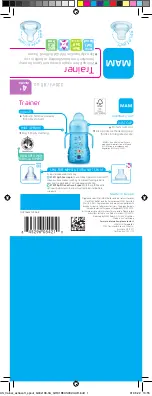
Prepared date
Approved date
File number
S230XLP03
Page
9/24
Version
A
5
CHARGING THE BATTERIES
5.1 Charging batteries
Failure to follow the following safety instructions may result in personal injuries or
damage to the device!
•
Do not connect more than two batteries in series. Connecting more than two batteries in
series might exceed the voltage limit of the built-in PCM, leaving the battery without critical
safety features such as over-voltage and over-temperature protection.
•
Do not short circuit the 12V batteries.
The 12V LiFePO4 battery is compatible with 12V lead-acid battery charger of 6 A or less (if
applicable) although it would lead to lower discharging capacity. Chargers that automatically
detect voltage at the terminals and charge accordingly may fail to wake the 12V from a state of
under-voltage protection. Constant Voltage (CV) chargers may result in an inrush of current due
to the low impedance of the cells, interrupting the charge. Reset the charger and continue
charging normally if the charger trips. Determine the end-of-charge voltage for the battery
system by multiplying the number of batteries connected in series by the maximum
recommended charge voltage of a single battery (14.6V), as shown in Equation 1.
Eq. 1 (Number of batteries in series) x (Recommended Maximum Charge Voltage, battery) =
Charge Voltage, String
To prevent damage to 12V batteries connected in series from a current inrush during charging,
ensure that the difference between battery system voltage and charger voltage is never greater
than 10.0V and limit the peak inrush current to 10A(if applicable). Limit the peak inrush current
by minimizing charger capacitance and/or providing current limiting circuitry between the charger
and battery system. To charge a single 12V battery, the maximum charge voltage is 14.6V and
the maximum charge and inrush current is 10A(if applicable). We recommend to charge each
battery alone before use.
Refer to the following table for recommended charge currents and voltage.
Example
Description
Example 1
If the battery string has 2 batteries in parallel (2P), and the recommended charge
current per battery is 9.0 A, then the charge current for this parallel string is 9.0 A.
Example 2
If the battery string has two batteries in series (2S), and the recommended charge
voltage per battery is 14.6 V, then the end of charge voltage for this series string is
29.2 V: (2 batteries, series) x (14.6 V) = 29.2 V
12V Smart Battery
User Guide










































